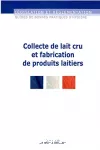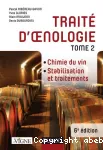Adresse
Infodoc : Réseau des bibliothèques et centres de documentation d'AgroParisTechFrance
contact

Catégories
Documents disponibles dans cette catégorie (16)
 Ajouter le résultat dans votre panier Faire une suggestion Affiner la recherche Interroger des sources externes
Ajouter le résultat dans votre panier Faire une suggestion Affiner la recherche Interroger des sources externes
 Livre
Livre
 Livre
Livre
 Livre
Livre978-0-85709-058-41 vol. (XXVI-577 p.)
1 vol. (XXVI-577 p.)ISBN : 978-0-85709-058-4 
 Livre
Livre978-2-04-007195-018 p. - 238 p.
18 p. - 238 p.ISBN : 978-2-04-007195-0 
 Livre1 vol. (XVI-295 p.)
Livre1 vol. (XVI-295 p.)
1 vol. (XVI-295 p.)
 Livre29.00 EUR
Livre29.00 EUR978-2-84941-102-51 vol. (160 p.)
1 vol. (160 p.)Prix : 29.00 EUR ISBN : 978-2-84941-102-5 
 LivreMAISONS-ALFORT : Agence nationale de sécurité sanitaire de l'alimentation, de l'environnement et du travail ; 2011 2011
LivreMAISONS-ALFORT : Agence nationale de sécurité sanitaire de l'alimentation, de l'environnement et du travail ; 2011 2011978-2-11-128112-736 p. - 305 p.
36 p. - 305 p.ISBN : 978-2-11-128112-7 
 Livre24 EUR
Livre24 EUR978-2-11-076835-31 vol. (V-337 p.)
1 vol. (V-337 p.)Prix : 24 EUR ISBN : 978-2-11-076835-3 
 Livre650,7
Livre650,7978-2-12-197621-1256 p.
256 p.Prix : 650,7 ISBN : 978-2-12-197621-1 
 Livre
Livre
 Livre
Livre978-2-04-002742-1270 p.
270 p.ISBN : 978-2-04-002742-1 
 Livre
Livre978-0-412-13020-5521 p.
521 p.ISBN : 978-0-412-13020-5 
 Livre
Livre
 Livre
Livre978-1-4471-6499-91 vol. (X-310 p.)
1 vol. (X-310 p.)ISBN : 978-1-4471-6499-9 
 Livre250 EUR
Livre250 EUR978-2-7430-0678-51 vol. (XXIII-1122 p.)
1 vol. (XXIII-1122 p.)Prix : 250 EUR ISBN : 978-2-7430-0678-5 
 Livre125 EUR
Livre125 EUR978-2-10-058236-51 vol. (XVIII-605 p.)
1 vol. (XVIII-605 p.)Prix : 125 EUR ISBN : 978-2-10-058236-5





